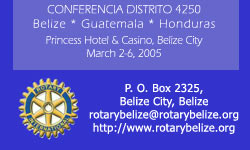|
||||
The more I get into this art of backyard birding in Belize, the more I realize that the reason people have come to birding slower than they have to other adventure sports, is that from the outside looking in I too always thought is was an elite undertaking. However, with closer examination and active participation, that reasoning just could not be further from the truth. Although it certainly helps to have at least a pair of worthy binoculars if you are over the age of fourteen and require eye glasses to read the burger menu at most drive thru restaurants, it is not mandatory to see birds in paradise. Nor is it required that you own the latest copy of a bird identification book accompanied by a list of blank spaces to log your sightings, though both compliment each other and in the case of the former, a book with pictures sure is better than one without. That said, I was sitting in the local Tropic Air terminal in Punta Gorda one day awaiting the arrival and the subsequent departure of the flight north from PG to Placencia when I noticed a promotional poster for TIDE. The acronym is short for the Toledo Institute for the Development of the Environment, the non governmental organization based in Punta Gorda charged with the task of maintaining the Port of Honduras Marine Reserve as well as vast tracts of some of the last remaining natural ecological landscapes found only in the Toledo District of Belize. As I studied the information contained in TIDE's poster display, I focused my attention upon the photographs of many of the rare birds and their threatened habitats. Suddenly I realized I was looking at a photograph of a bird that just days before I had found myself staring up at. It was perched upon a tree branch directly above my head. Indeed, it was the exact same bird the TIDE poster in the Tropic Air terminal in PG was declaring a rare and endangered species. The sighting came at the point in my day when birds seemed to be ready to be noticed or simply at that time when I afford time to look in their direction. It had been another early rising as jungle mornings so often require and I was listening to Nuri Muhammad and Richard Merrill, the two morning talk show host for LOVE-FM, the only nationwide Belizean radio broadcast that reaches the back porch of the thatch roofed champa that houses my kitchen. Richard was as usual expounding upon the virtues he had learned about life during his years in the "far frozen north" when Nuri decided enough was enough and either by accident or by design turned off the microphone in Belmopan that insured to all the listeners that once again Mr. Merrill would not be able to finish his thought. That's when I decided to flip the dial and change over to the only other channel that comes in loud and clear. That would be a Guatemalan station in Puerto Barrios that blares out salsa and a handful of reggae regulars mixed with a basket filled full with corazon love songs that in any language will break your heart in pieces. Whether I like it or not doesn't really matter, for my choices are so limited on my portable radio and this station comes in so crystal clear it sounds as though they are broadcasting from the other room. In
fact, this day when the music from Guatemala took over the airwaves,
that's when I noticed a lone bird sitting above me on the branch
of the tree that Lionel, the carpenter who built the porch on
the back of the kitchen champa, said had to stay. It was Lionel
who felt it was best to leave it in place and in turn we agreed
to build the decking around the tree. |
||||
| And so there above my head on the deck built by the man the locals refer to as ‘El Drunko’, together enjoying with me, the less than elite birder the start of yet another day in paradise, was a uniquely coloured bird seemingly without song. As I realized that I had not sighted this bird before, luckily for me I had pushed all those concerns for what I felt was a necessity of proper birding to the wayside. For I had done so one day in a moment of passion for the adventure of the true sport of bird watching and drove to town in time to turn in early to Mr. Johnson two empty cases of Beliken bottles at his distribution center in downtown Punta Gorda. That move alone can provoke Mr. Johnson on most days, but this was just before closing on a Saturday, and this was a dangerous time in the bottle returning business in Belize. As I explained to Mr. Johnson that my decision was short lived for I would surly be back within days for restocking, he understood completely and excepted my explanation that the refund would provide me the required funds to purchase H. Lee Jone’s noted book, ‘Birds of Belize’. Was it possible that my friend Mr. Johnson was also a backyard bird watcher? With Mr. Lee’s guide book to the birds of Belize spread openly across my lap, I flipped through the pages quickly without making a single hasty move that might in turn alarm the bird to my presence. There on plate page 29 I realized that I was in the presence of greatness. For positioned less than six feet above my head was the Violaceous Trogon. |
||||







